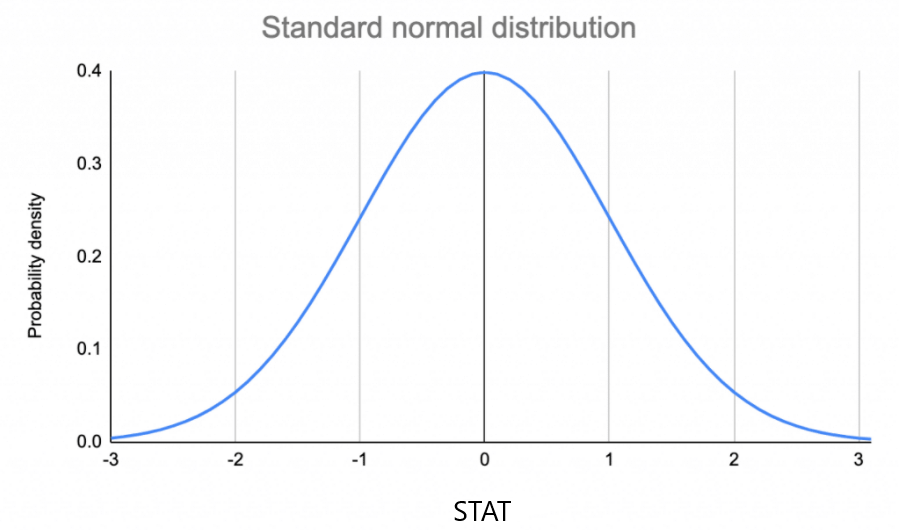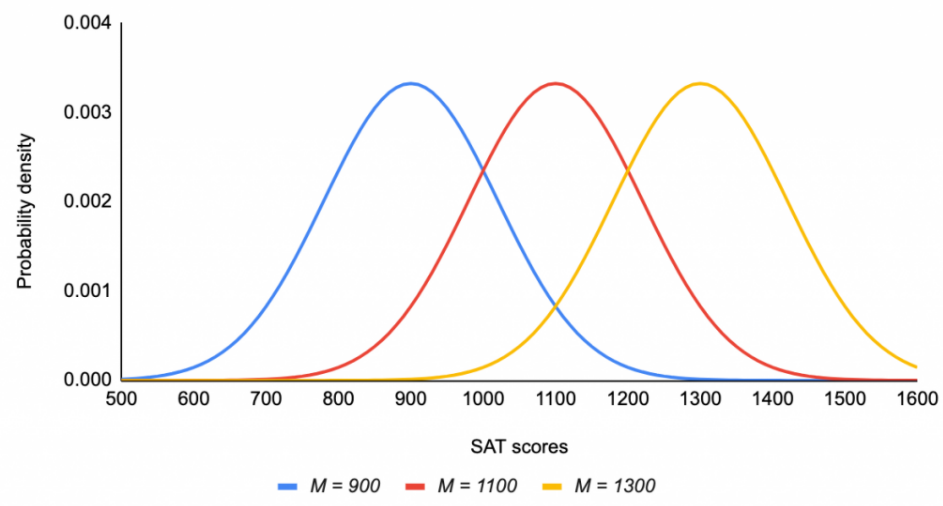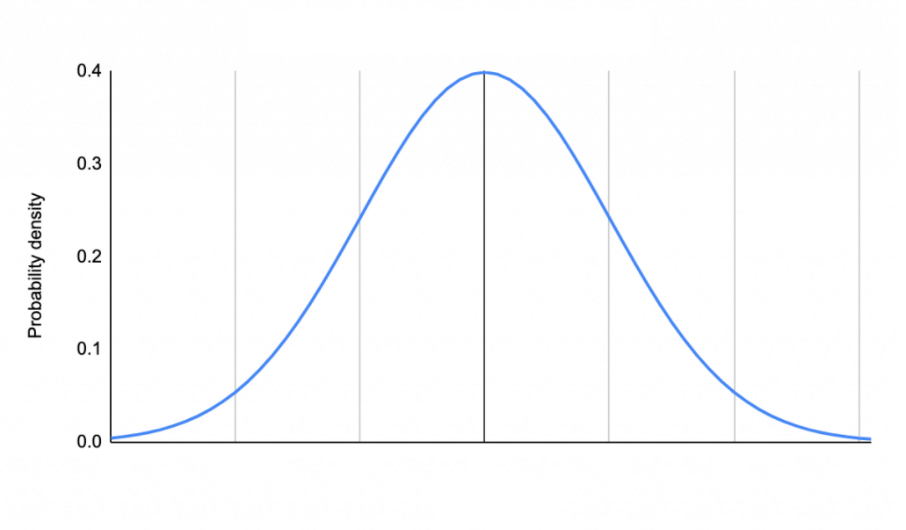# Calculate the probability of being to the left of quantile -1
pnorm(q = -1, mean = 0, sd = 1)Distributions
Section 9.1
The Standard Normal Distribution

Properties
- The area under the curve is 1 (or 100%)
- The mean of the distribution is 0
- The standard deviation of the distribution is 1
Can use the normal distribution in R or at https://homepage.divms.uiowa.edu/~mbognar/applets/normal.html
Empirical Rule

- Around 68% of values are within one standard deviation from the mean.
- Around 95% of values are within two standard deviations from the mean.
- Around 99.7% of values are within three standard deviations from the mean.
Why is this useful? If we know the mean and standard deviation of a variable that follows the normal distribution, we can calculate the probability of an event occurring.
How is this applicable? We can transform any normally distributed variable into a standard normal distribution with standardization.
\[\hbox{STAT} = \frac{X - mean(X)}{sd(X)}\]
The Normal Distribution
- Changing \(\mu\) (mu, the mean), changes where the center (peak) of the distribution is located.
- Changing \(\sigma\) (sigma, the standard deviation), changes the spread of the distribution.
- The shape of the distribution never changes. It is always unimodal and symmetric (no skew).



The T-Distribution
The t-distribution is similar in shape to a normal distribution.

- Completely characterized by it’s degrees of freedom (df). A parameter defined based on the sample size \(n\).
- As we make the degrees of freedom (\(df\)) larger the t-distribution is getting closer to the standard normal distribution.
- The normal distribution assumes that you know the population standard deviation, \(\sigma\). The t-distribution is used if you only know the sample standard deviation, \(s\) (ie: \(\sigma\) unknown).
Normal Distribution in R
pnorm() calculates the probability to the left of a quantile
qnorm() calculates the quantile with p% of data to the left
Example 1
For a standard normal distribution, what is the probability of being less than one standard deviation below the mean?
Example 2
For a standard normal distribution, find the STAT (CV) for being in the highest 30%.
Example 3
![]()
The amount of money spent buying weekly groceries follows a normal distribution. We are lucky enough to know the population mean is $150 and the population standard deviation is $20. Find the probability an individual spent less than $120.
T-distribution in R
VERY similar to normal distribution but…
pt() calculates the probability to the left of a quantile for a t-distribution
qt() calculates the quantile with p% of data to the left for a t-distribution

